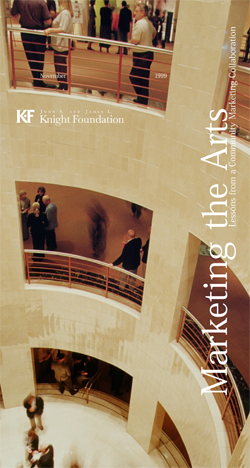Community Foundation
Community Foundation
I have had, with my friend Wes Jackson, a number of useful conversations about the necessity of getting out of movements — even movements that have seemed necessary and dear to us — when they have lapsed into self-righteousness and self-betrayal, as movements seem almost invariably to do. People in movements too readily learn to deny to others the rights and privileges they demand for themselves. They too easily become unable to mean their own language, as when a “peace movement” becomes violent.
Read More...1999, 40 pages, $15; National Performance Network, San Francisco, California, 415-666-1870, info@npnweb.org
Read More...Attending arts events is exhilarating, inspiring, and full of meaning. For years I've wished more people could have that experience. Why don't more people enjoy and appreciate the work that means so much to me? It's not just those who have different values, but people who are similar, with the same educational and demographic attributes — even members of my own family. If I can't convince them to become active participants, who can I convince?
Read More...November 1999, 98 pages, developed in cooperation with the Arts Education Partnership and the President's Committee on the Arts and Humanities, funded by the G.E. Fund and the John D. and Catherine T. MacArthur Foundation.
Read More...A growing chorus of complaint has emerged about foundation giving in recent years. According to critics, foundations do not distribute enough in grant payments to justify their privileged position. On average, foundations pay out about 5.5 percent of their total assets each year and many critics believe that is just not enough.
Read More...1999, 36 pages. A report on meetings of The American Assembly on November 13, 1998 at The Getty Center, California and on April 8-9, 1999 at Arden House, New York.
Read More...Quarterly; nonprofit North American subscription rates vary according to budget size and the exchange rate ($104-$156); Henry Stewart Publications, Russell House, London, United Kingdom.
Read More...November 1999, 48 pages; John S. and James L. Knight Foundation, Miami, Florida.
Download:
Read More...1999, 23 pages. Final report of collaborative research project, Millennium Communications Group, Inc., 58 Salem Street, Andover, Massachusetts 01810.
Although its main focus seems to be on exploring ways of expanding philanthropy among new donors, Philanthropy's Current and New Stakeholders: Building a Common Vision for an Expanded Future also offers some interesting — and disturbing — observations on how traditional philanthropy is viewed.
Read More...
